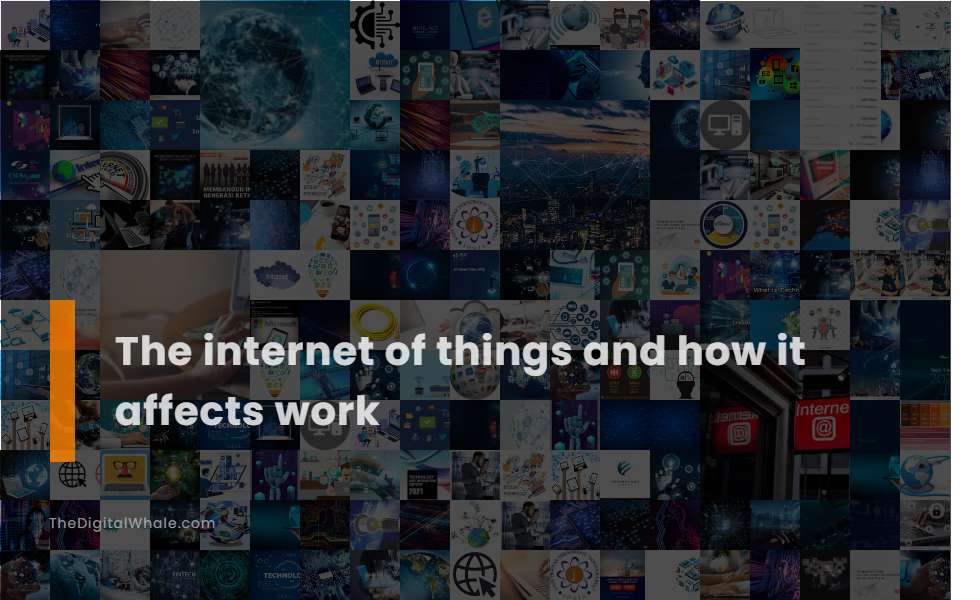The Internet of Things and How It Affects Work
How do IoT devices and apps affect the workplace? What are some of the biggest benefits of the internet of things? Let's find out more about The Internet of Things and How It Affects Work.

Improved Workplace Safety: Enhanced monitoring of workplace conditions to mitigate risks and ensure employee safety.
The Internet of Things (IoT) plays a pivotal role in enhancing workplace safety by employing various technologies. Sensors are used to monitor indoor air quality, detect fire and movement, and track employee locations, thereby creating a safer environment. Wearable devices, on the other hand, identify signs of strain and fatigue and prevent unauthorized access to hazardous areas. In industrial settings, IoT solutions such as condition monitoring sensors and entry authentication wearables ensure robust access control and provide real-time location data. To explore how IoT applications can transform workplace environments further, itâs essential to consider the insights provided by Verizon Business, which discusses how these technologies enhance employee health and safety. IoT technologies, including proximity detection systems and the integration of digital workflows, not only alert workers to hazards but also improve operational efficiency by allowing instant communication and predictive maintenance, ensuring a proactive approach to safety in high-risk industries.
Increased Productivity: Automation and real-time data collection to focus employees on higher-value tasks.
The Internet of Things (IoT) significantly enhances workplace productivity by automating both minor and major functions, enabling real-time data collection to predict maintenance needs, and optimizing workflows effectively. This automation allows employees to focus on higher-value tasks, maintain a consistent level of productivity, and improve overall efficiency. By predicting maintenance needs and optimizing employee comfort and logistics, the implementation of IoT can minimize downtime. The power of IoT lies in its ability to streamline operations, as evident in its role in optimizing workflows, highlighted in this blog post. Consequently, organizations can leverage IoT to drive a more productive and efficient work environment, underscoring its transformative impact on modern workplaces.
Real-Time Access to Information: Uninterrupted flow of data for better decision-making and reduced miscommunication.
The Internet of Things (IoT) provides real-time access to information, enabling an uninterrupted data flow that enhances decision-making and reduces miscommunication by streamlining tasks, automating processes, and offering real-time data analytics. By facilitating real-time data processing, IoT allows organizations to respond quickly to changes, optimize operations, and prevent issues, thereby supporting agile and precise decision-making. For more insights into how IoT and data-driven decision-making work together, explore the synergy described on FasterCapital.
Cost Reduction: Efficient use of resources, reduced utility costs, and optimized inventory management.
The integration of the Internet of Things (IoT) in the workplace is transforming the way businesses manage resources and expenses. By implementing smart technologies such as intelligent thermostats and lighting systems, companies can optimize energy consumption, scheduling devices to operate only when necessary. This not only helps in reducing utility costs but also minimizes waste, contributing to a more sustainable environment. In addition, IoT technology plays a significant role in enhancing resource efficiency by facilitating real-time energy monitoring and predictive maintenance, which help lower overall costs while minimizing environmental impact. Furthermore, the synergy of IoT with AI in inventory management provides real-time tracking capabilities, preventing common inventory issues like overstocks or shortages. This leads to substantial savings in terms of storage rental, utilities, and personnel expenses. For more detailed insights on how IoT can revolutionize cost management in the workplace, explore this comprehensive guide on IoT in the Workplace available at Relevant Software.
Enhanced Operational Efficiency: Automation of tasks, improved workflow optimization, and reduced manual data collection.
The Internet of Things (IoT) has revolutionized the way we approach operational efficiency, as it enhances workplace productivity by automating repetitive tasks and optimizing workflows. This automation not only reduces the need for manual data collection but also facilitates uninterrupted workflows and improved communication. As a result, we can experience predictive maintenance which minimizes downtime and errors. Moreover, IoT workflow automation plays a crucial role in streamlining business processes by enabling real-time monitoring and automated actions, leading to a significant reduction in manual labor. This capability provides granular tracking of activities, which in turn offers valuable insights for better decision-making and improving the customer experience.
Related:
What are some benefits of artificial intelligence in the workplace? What are some of the advantages of using artificial intelligence in the workplace? Let's find out more about The Increasing Use of Artificial Intelligence In the Workplace.
Improved Collaboration: Advanced tools for teamwork, including telepresence robots and smart virtual assistants.
The Internet of Things (IoT) significantly enhances collaboration in the workplace by integrating smart devices and platforms, enabling seamless interactions across multiple devices. This includes the use of IoT-powered communication tools, smart speakers like Amazon Alexa or Google Assistant, and advanced video conferencing systems that optimize audio and video quality, as well as telepresence robots that provide a more personal and immersive experience for remote workers. To explore further on how IoT is shaping the future of office workspaces, you can read more on the detailed insights provided by SmartDev.
Remote Management and Flexibility: Ability for employees to work from anywhere, facilitated by IoT technology.
The Internet of Things (IoT) significantly enhances remote work by creating flexible and secure work environments. It uses connected devices such as smart home offices, wearable devices, and IoT-enabled communication tools to streamline communication, boost productivity, and provide seamless access to information, allowing employees to work efficiently from anywhere. The importance of this innovation cannot be overstated, as it plays a critical role in transforming how we approach work in today's digital age. For more insights, explore how IoT Tech is fostering the Generation Zâs Remote Working Culture, illustrating the dynamic shift towards more adaptable work settings. Through enabling technology, IoT has become indispensable in redefining traditional office norms and supporting the evolving remote work landscape.
Autonomous Networks: Integration of sensors, cameras, and other devices to enhance the work environment.
The integration of IoT in the workplace involves autonomous networks of sensors, cameras, and other devices that significantly enhance efficiency, promote collaboration, and ensure a safer and healthier work environment. These technologies automate processes, monitor workplace conditions, and provide real-time alerts and data-driven insights. Through the use of AI-enabled cameras, sensors, and environmental monitoring devices, businesses can monitor occupancy, maintain optimal air quality, and adhere to safety regulations. For more details on how these technologies contribute to workplace safety, you can explore the insights shared on Trio's blog on IoT in the Workplace. By leveraging IoT devices such as environmental sensors, wearables, and smart cameras, workplaces can proactively detect hazards, track employee movements, and analyze data to optimize safety and operational efficiency.
Employee Health and Well-being: Monitoring and support for employee health through wearables and other IoT devices.
The Internet of Things (IoT) is transforming workplace health monitoring by using connected devices and wearables to track vital signs, environmental conditions, and mental well-being. These systems provide real-time analytics, proactive interventions, and personalized health insights, reducing absenteeism, enhancing productivity, and creating a safer work environment. For more insights on how IoT is revolutionizing workplace wellness, check out the detailed article on Techrseries.
Energy and Resource Optimization: Automated control of lighting, thermostats, and other systems to reduce energy consumption.
The Internet of Things (IoT) optimizes energy and resource usage through automated control of systems like lighting, thermostats, and smart meters. By efficiently reducing energy waste, IoT increases efficiency and lowers costs through its capability of collecting and managing data. This data allows for adjustments in operations based on real-time demand and user habits, greatly enhancing resource management. Discover more about these innovations at the Internet of Energy, where these advanced technologies are transforming energy usage and cost efficiency.
Related:
What is the gig economy and what are its distinct dangers? What are some of the challenges that workersface in the gig economy? Let's find out more about The Gig Economy and Its Effect On Workers' Rights.
